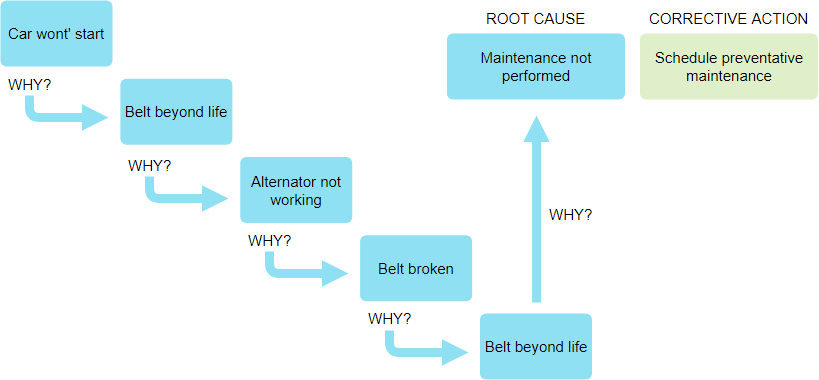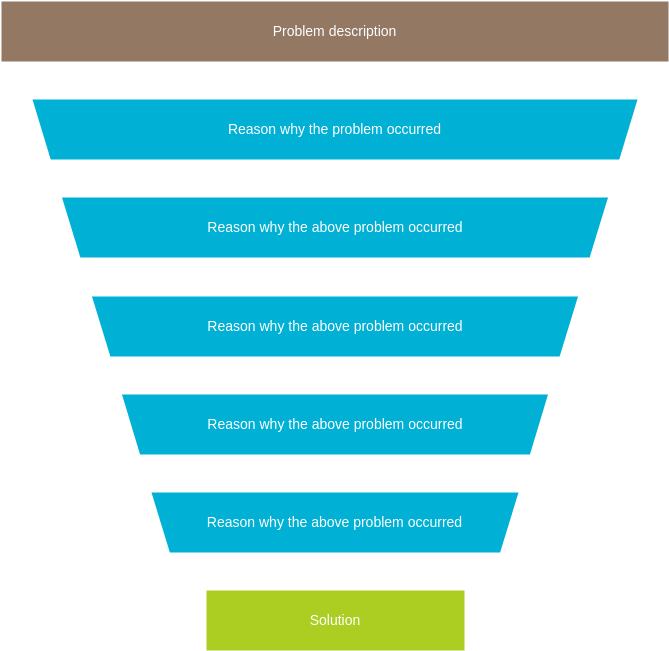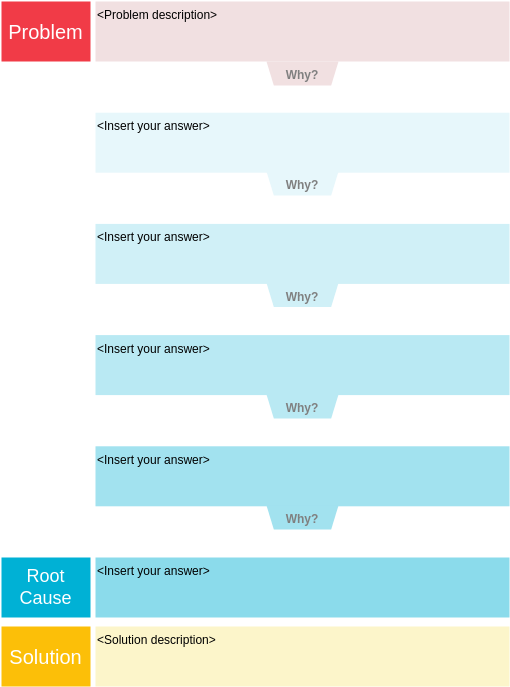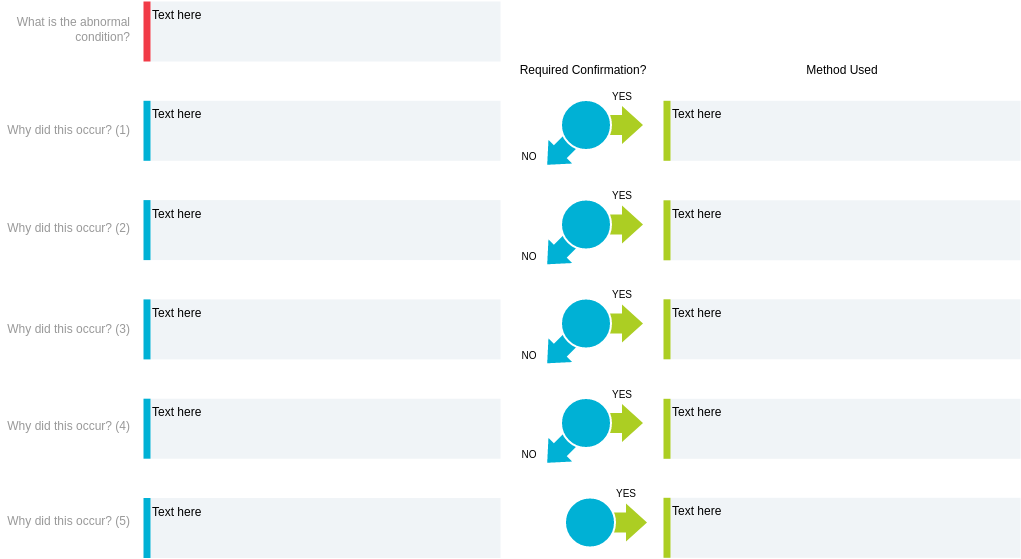Cause and effect is a fundamental relationship in problem-solving, where one event or condition (the cause) leads to another event or condition (the effect). By understanding this causal relationship, we can better identify and address the underlying issues that contribute to a problem.
The 5 Whys Technique: A Powerful Root Cause Analysis Tool
The 5 Whys is a straightforward and effective technique used to explore the root causes of a problem. By repeatedly asking the question “Why?” (typically five times), you can delve deeper into the problem and uncover the primary factors that led to the issue at hand.
The Key Benefits of the 5 Whys:
- Simplicity: The 5 Whys approach does not require complex tools or specialized software, making it accessible to individuals and teams.
- Speed: This technique can be applied relatively quickly, making it suitable for addressing time-sensitive problems.
- Collaboration: The iterative questioning process encourages teamwork and a shared understanding of the problem.
- Flexibility: The 5 Whys can be adapted and applied across various industries and problem contexts.
Problem Scenario: Car Won’t Start
A car owner has been facing an issue where their car won’t start. They have tried various troubleshooting steps, but the problem persists. To get to the root of the issue, the car owner decides to conduct a 5 Whys analysis.

Step 1: Define the Problem
The initial problem is that the car won’t start.
Step 2: Assemble the Team
In this case, the car owner will perform the 5 Whys analysis on their own, as they are the primary stakeholder in resolving the issue.
Step 3: Ask the First “Why?”
Why doesn’t the car start?
Answer: The belt is beyond its life expectancy.
Step 4: Ask “Why?” Again
Why is the belt beyond its life expectancy?
Answer: The alternator is not working properly.
Step 5: Ask “Why?” Again
Why is the alternator not working?
Answer: The belt is broken.
Step 6: Ask “Why?” Again
Why is the belt broken?
Answer: The belt was not replaced during the recommended maintenance interval.
Step 7: Ask “Why?” Again
Why was the belt not replaced during the recommended maintenance interval?
Answer: The car owner did not perform the scheduled preventive maintenance.
Findings:
The root cause analysis using the 5 Whys revealed that the primary reason for the car not starting is due to the lack of scheduled preventive maintenance. The car owner did not replace the belt at the recommended interval, which led to the belt breaking and the alternator failing, ultimately resulting in the car not starting.
Using the Findings:
Based on the 5 Whys analysis, the car owner can now take the following actions:
- Corrective Action:
- Schedule a service appointment to replace the broken belt and any other affected components.
- Preventive Action:
- Establish a regular preventive maintenance schedule for the car, including belt replacement at the recommended intervals.
- Set reminders or calendar events to ensure the preventive maintenance is performed on time.
Conclusion
By addressing the root cause and implementing preventive measures, the car owner can not only resolve the current issue but also prevent similar problems from occurring in the future. The 5 Whys analysis has provided valuable insights into the underlying factors contributing to the problem, allowing the car owner to take a proactive approach to vehicle maintenance and reliability.


